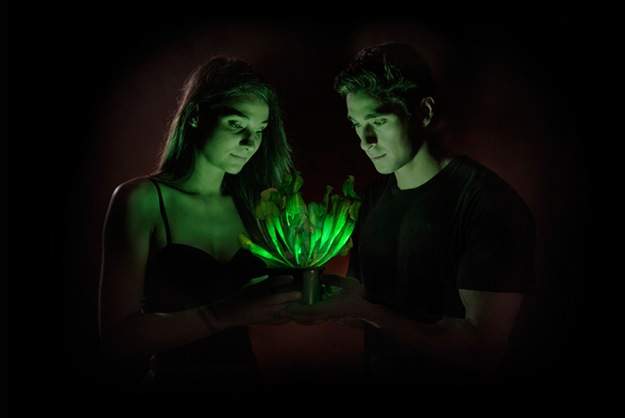Plants: The Lightbulbs of the Future?
Avatar's glowing forest could become real in your living room.
As any design blog will tell you, the future is a land where nature marries technology. Oh yes friends, we will have our green skyscrapers, our moss-festooned techsessories, and our Alderaan-like organic cities full of people wearing microchipped decorative ferns on their heads. Probably. And how will we light the interiors of this utopian Ewok village? With glow-in-the-dark plants, of course. Here's the twist: thanks to biotech company Bioglow, the future is now, except for the head ferns.
The secret of Bioglow's glowing plants is autoluminescence, the ability to generate light without any externally supplied substrate. That means no UV lights, no chemicals, no dyes and no electricity. After years of development, Bioglow has now perfected a plant with the power of autoluminescence, a truly exciting advance in the search for alternative and sustainable sources of light beyond electricity. It's also a beautiful idea visually, conjuring images of an Avatar-like world of illuminated foliage. Amusingly, the Biglow autoluminescent plant is actually called the Starlight Avatar. Apparently the strength of its glow best resembles starlight.
So how does it work? The Starlight Avatar is just like a firefly or deep sea jellyfish, with light-giving properties embedded in its cellular make-up. Back in 2010, a molecular biologist named Dr Alexander Krichevsky published his research regarding light-emitting plants in the journal PLOS One. Technology entrepreneur Tal Eidelberg quickly got on board, and the collaborators worked on increasing the lumen-power of their prototype.
Now you can even score a Starlight Avatar for yourself (if you have a lot of spare change to bid on pioneering technologies) by registering for the early February auction of 20 of the autoluminescent indoor plants. They're available only in the US though, so get your people over there onto it, stat.
Via PSFK.





